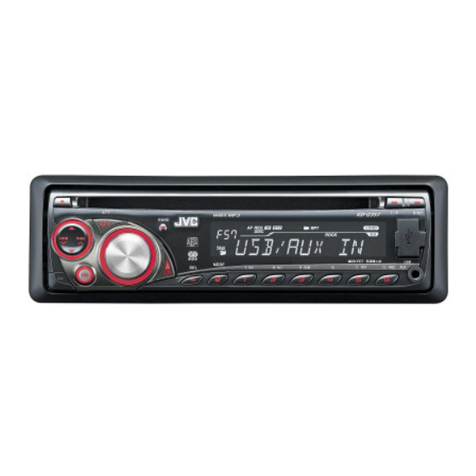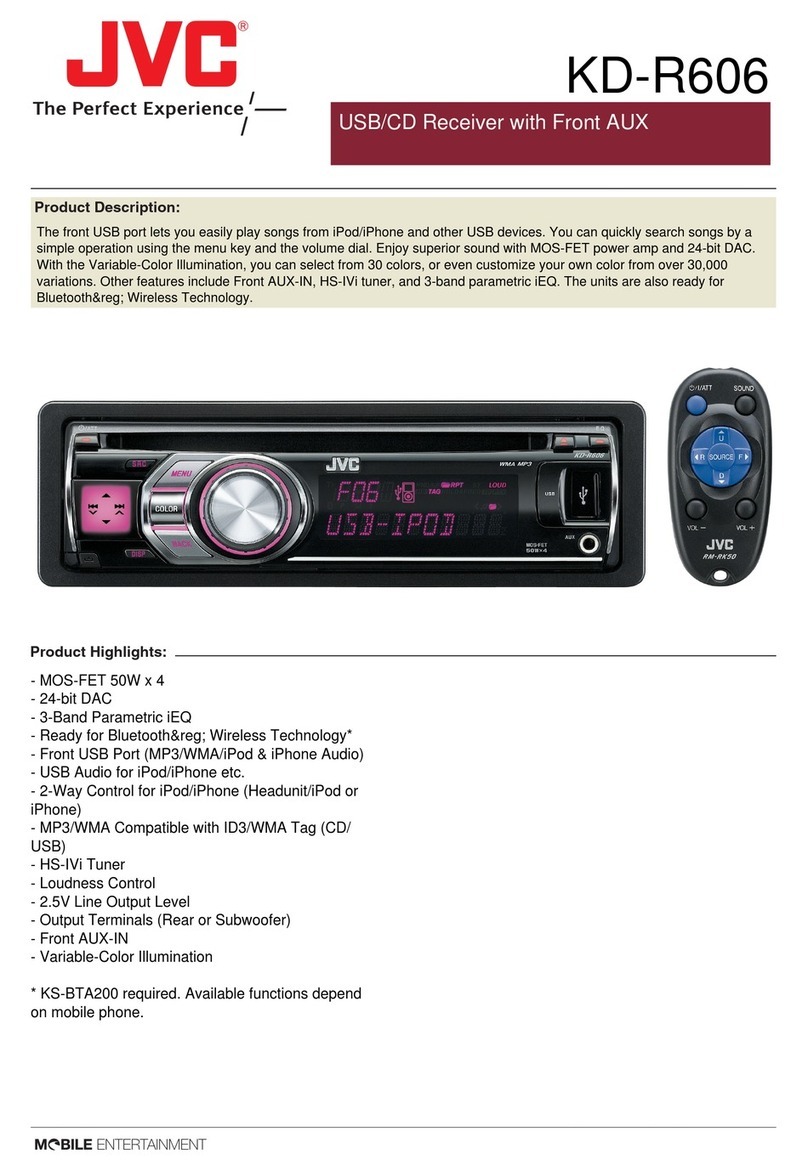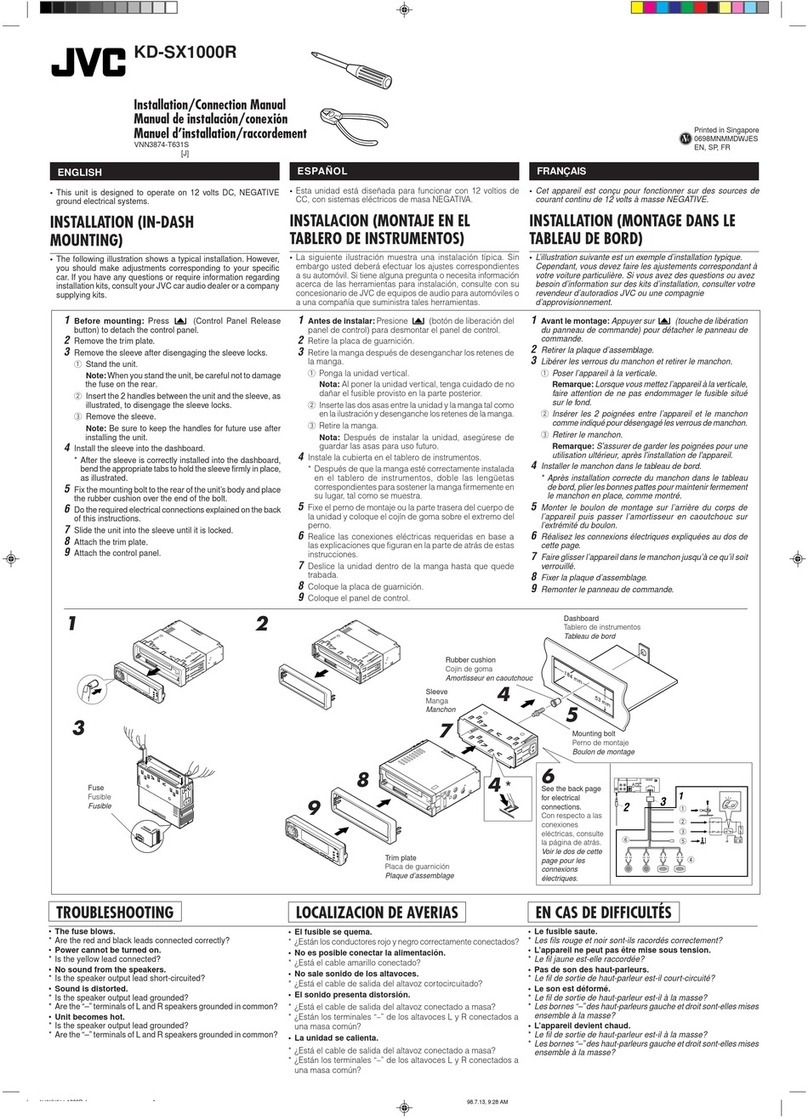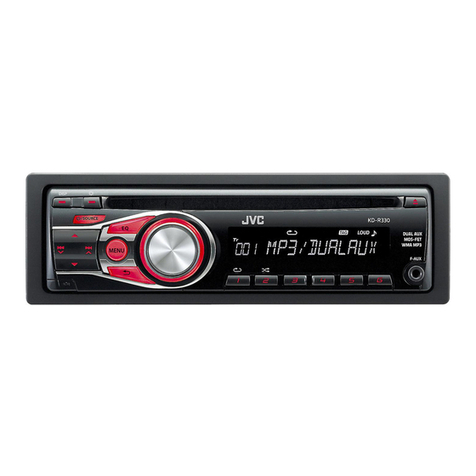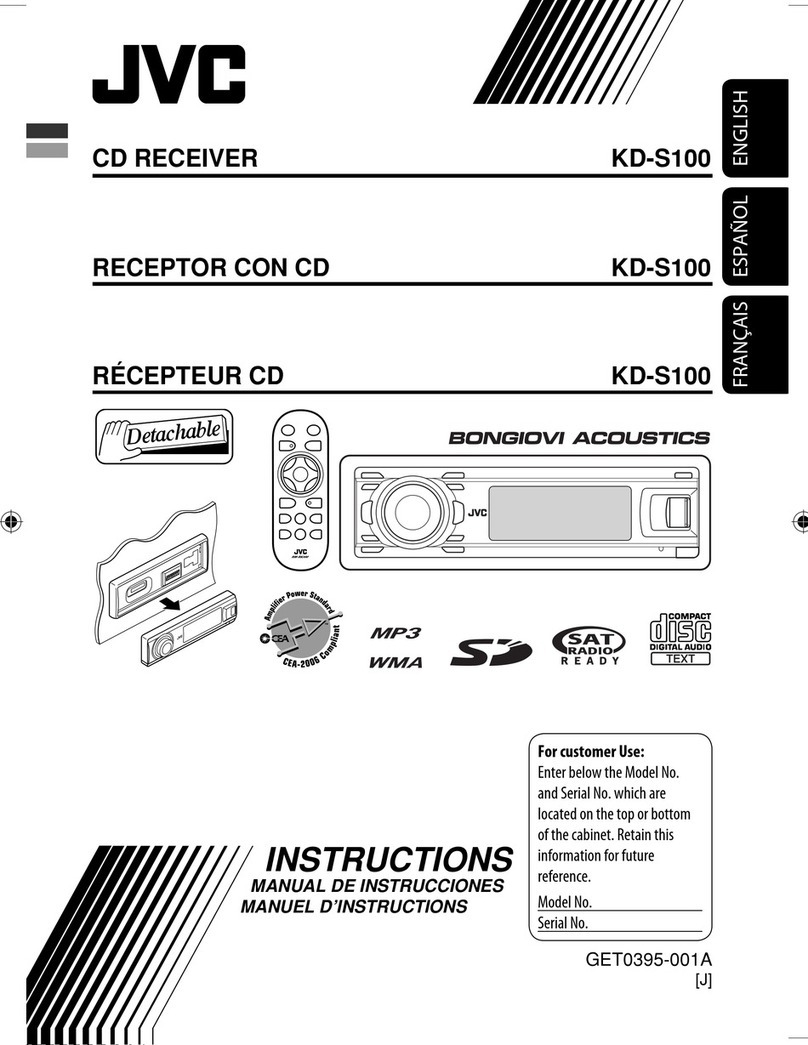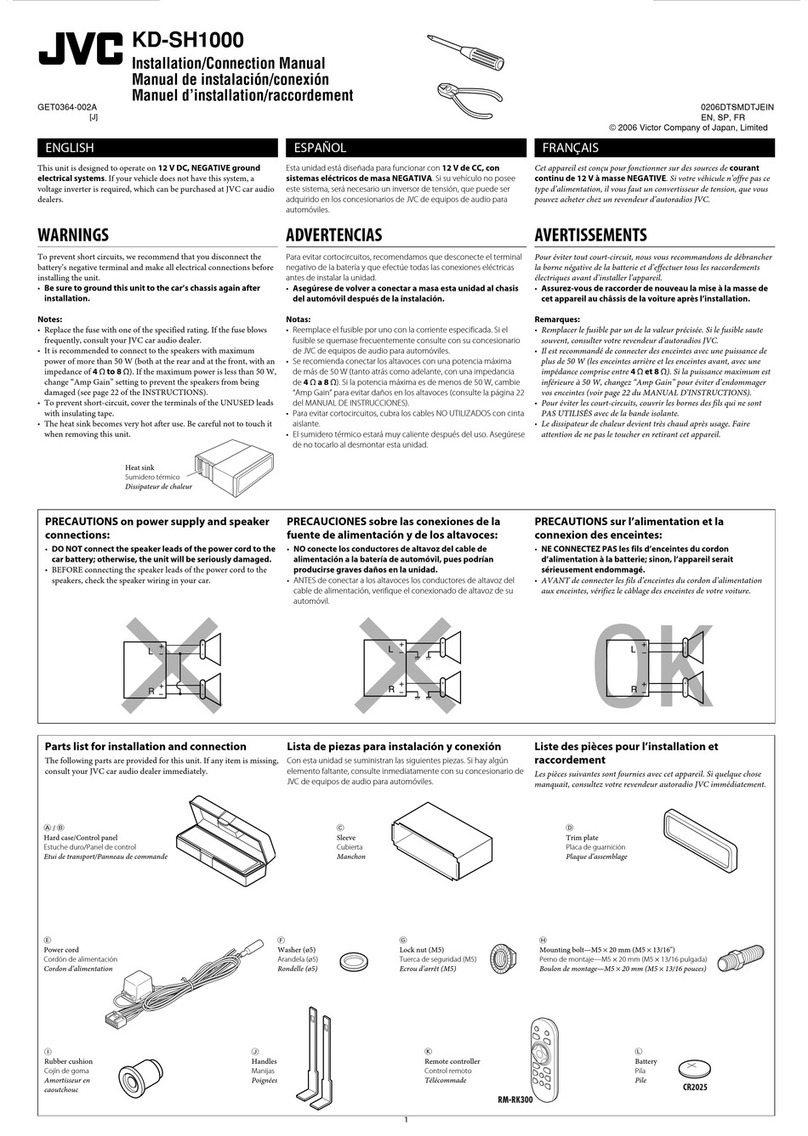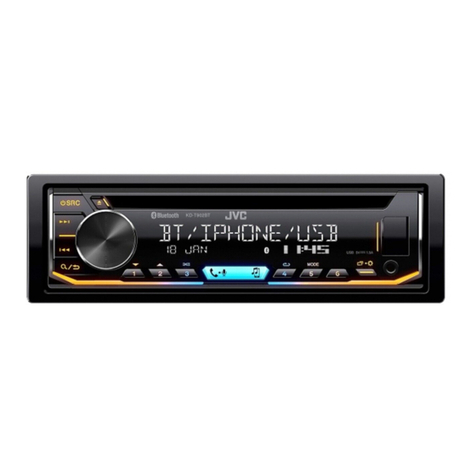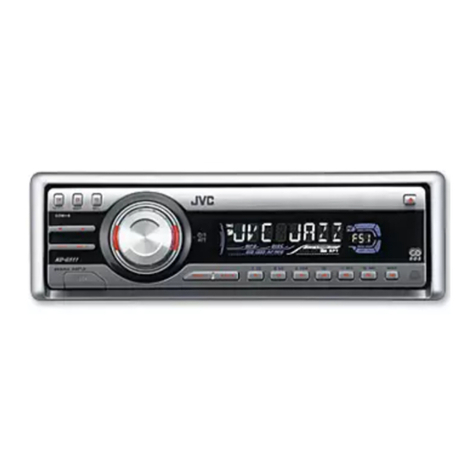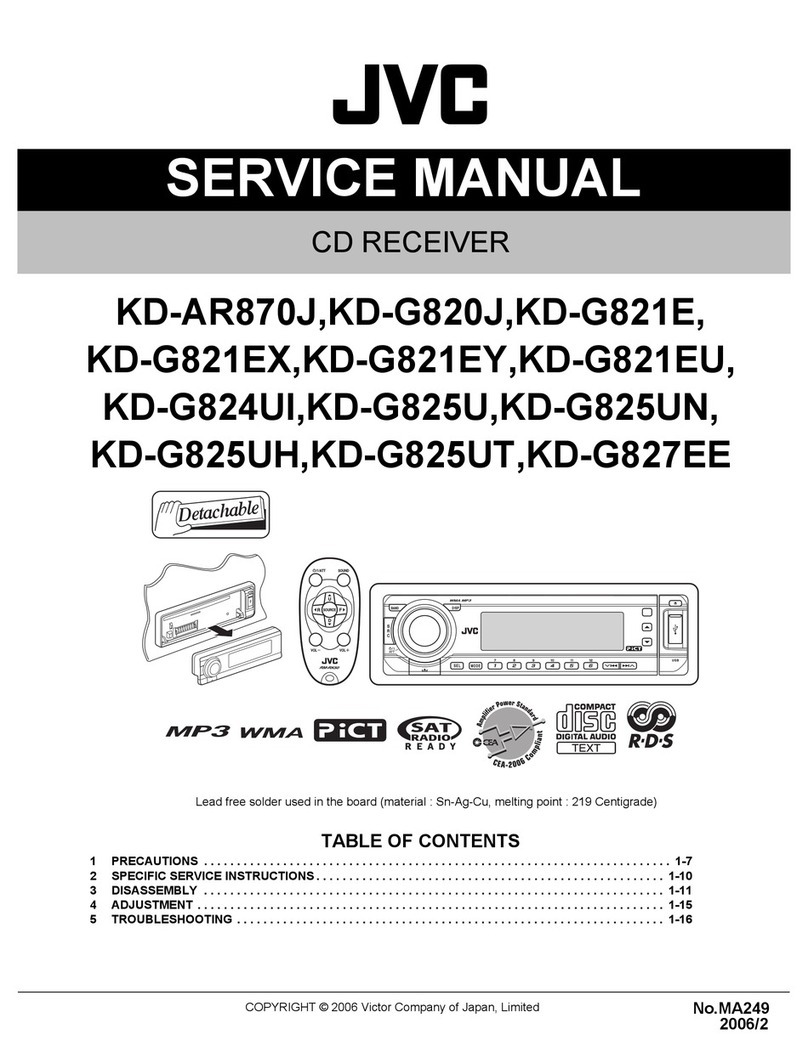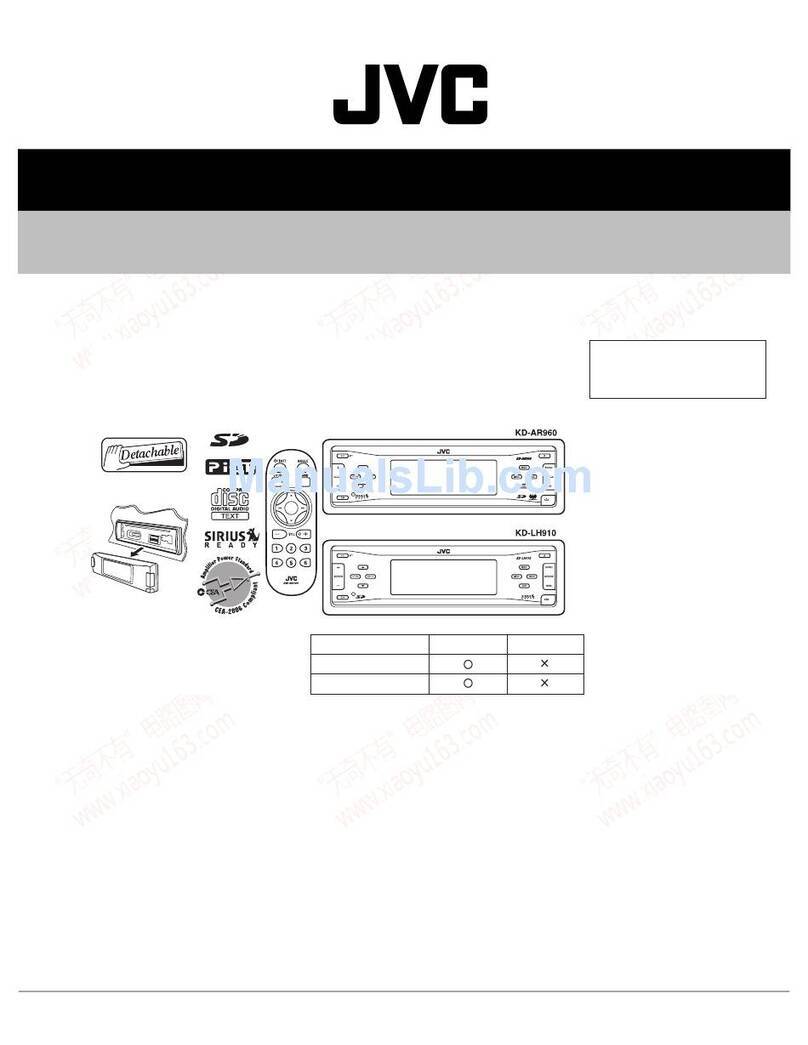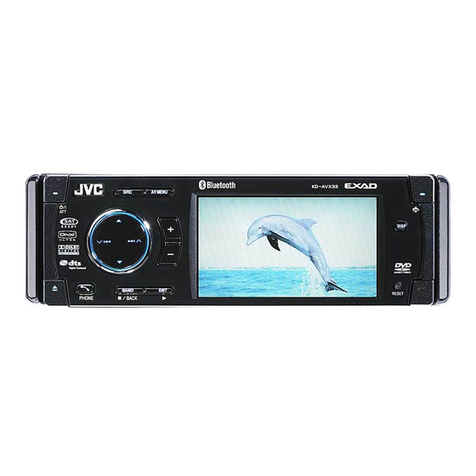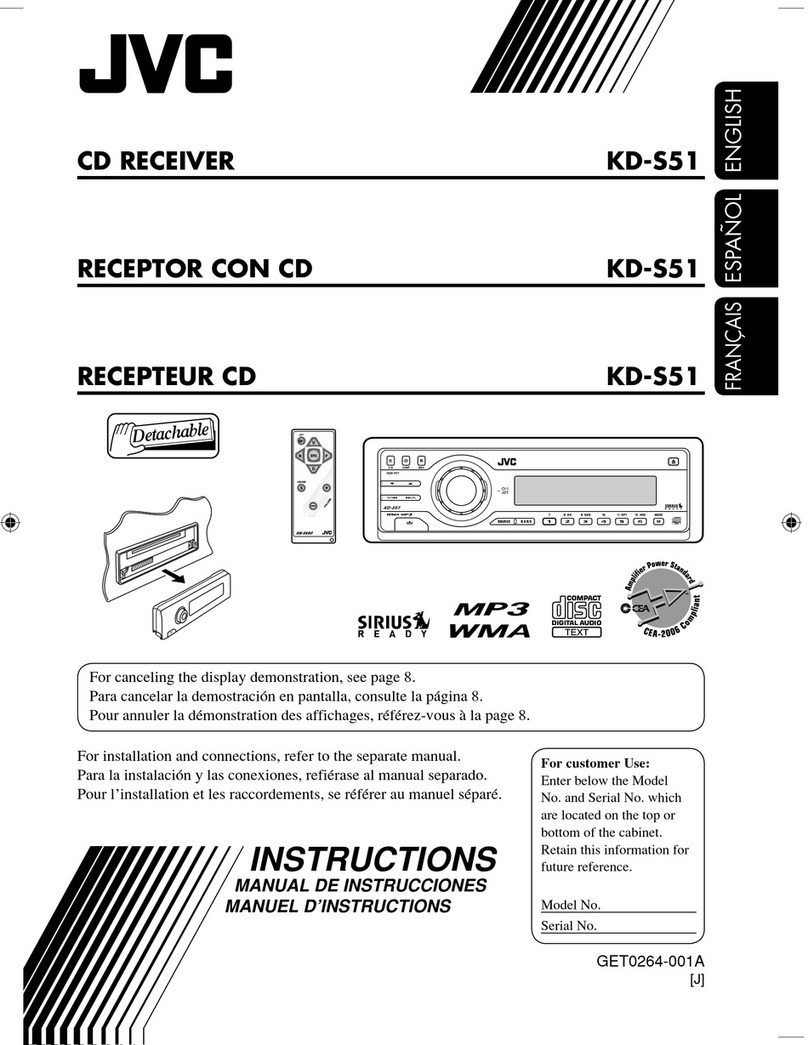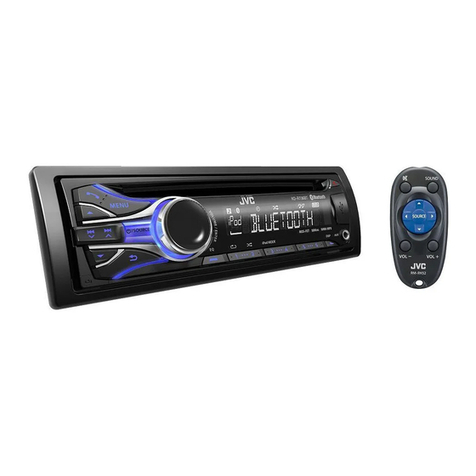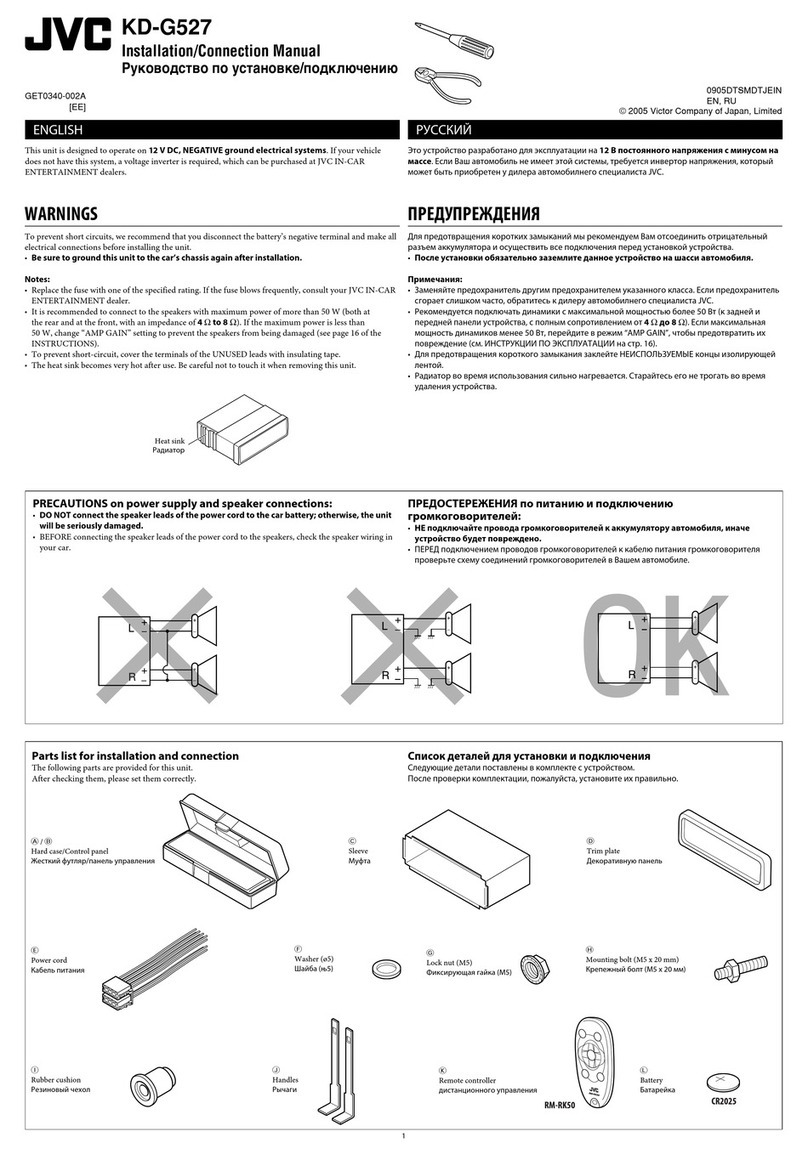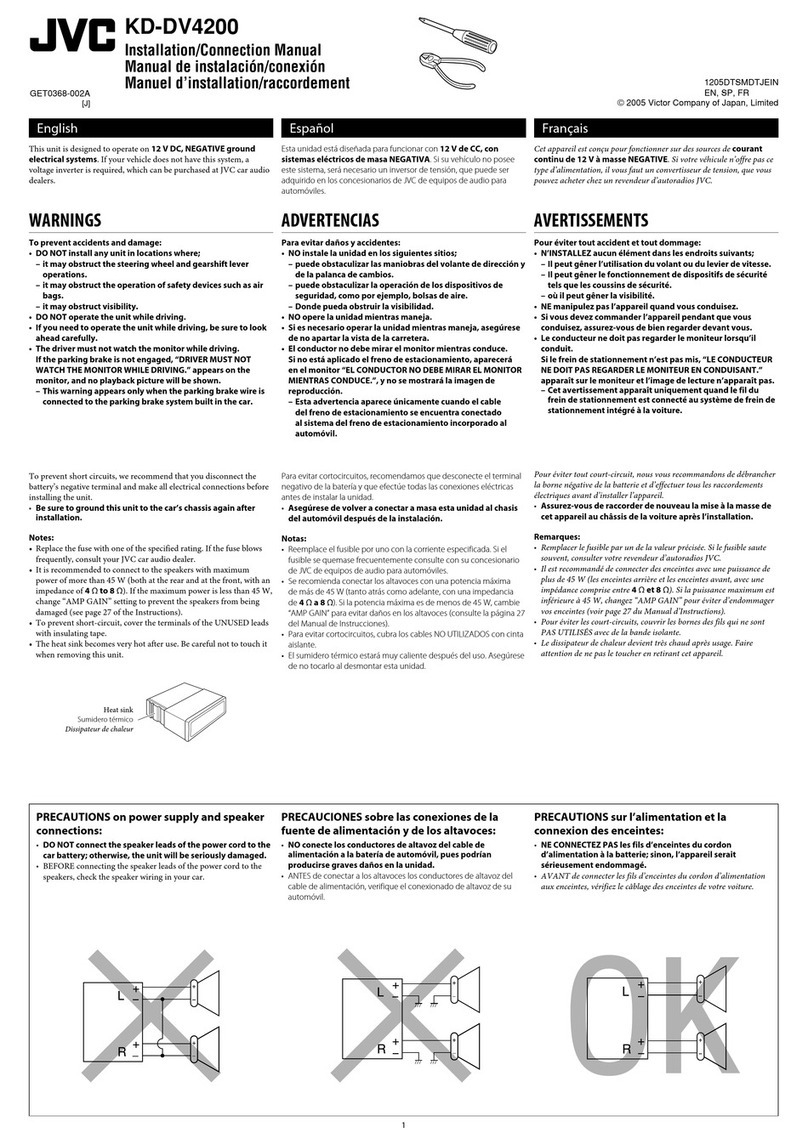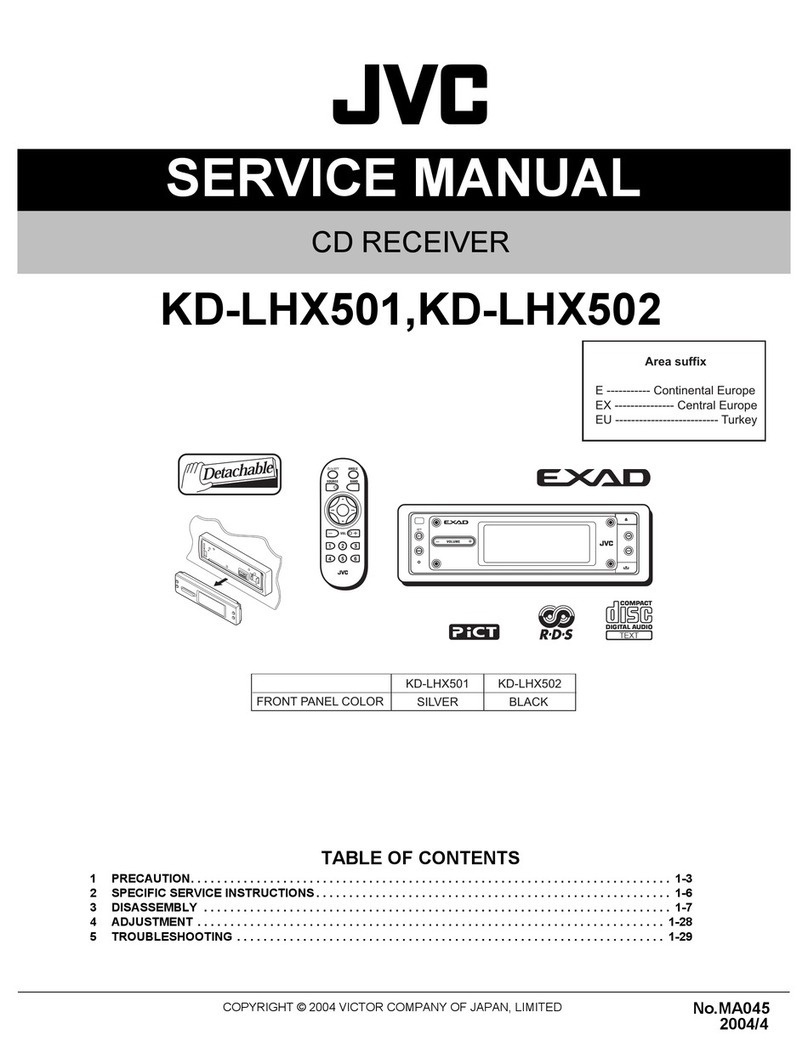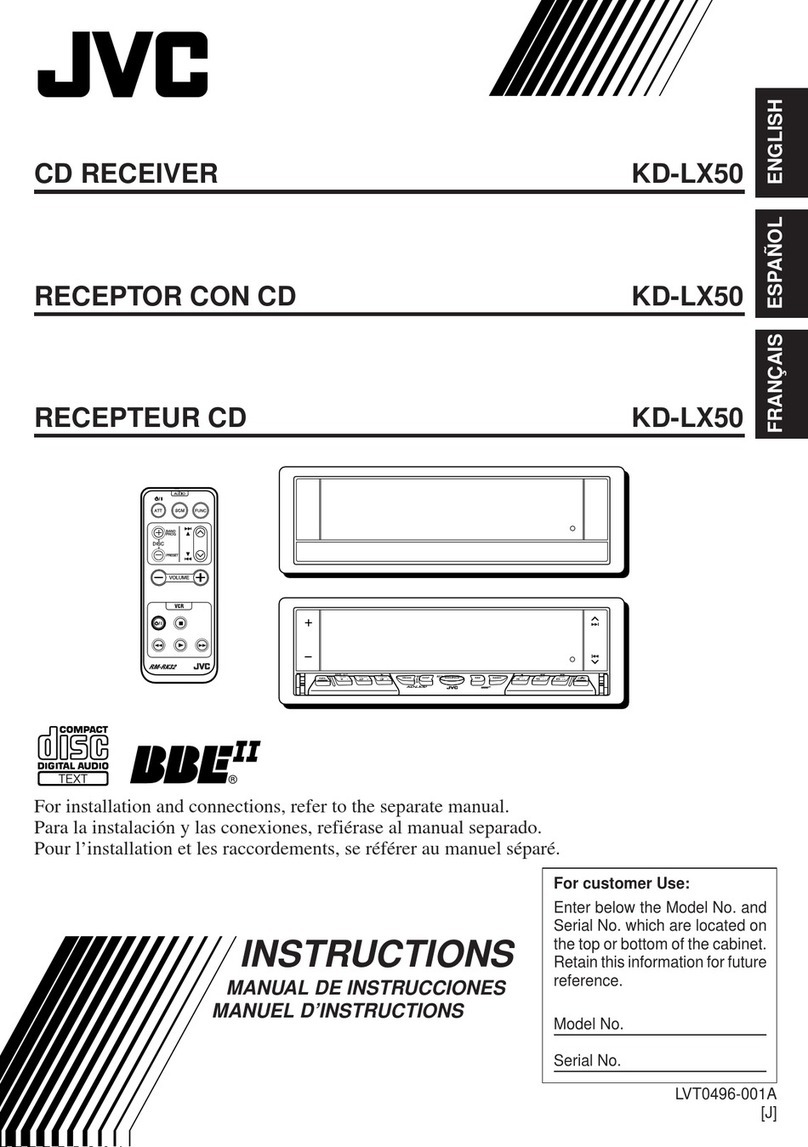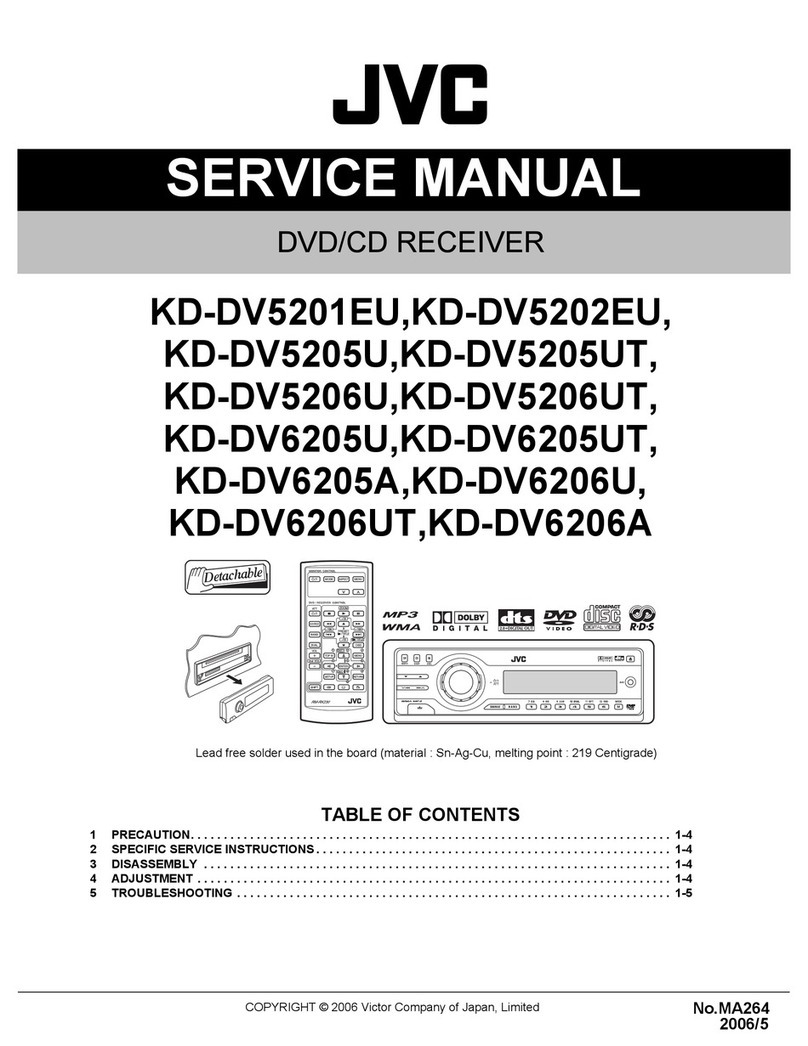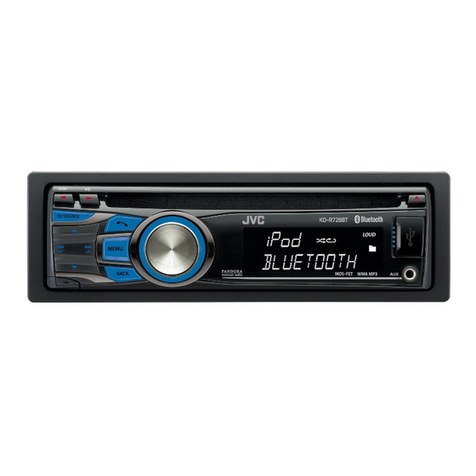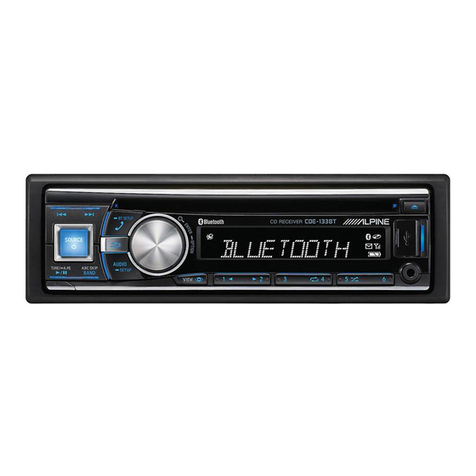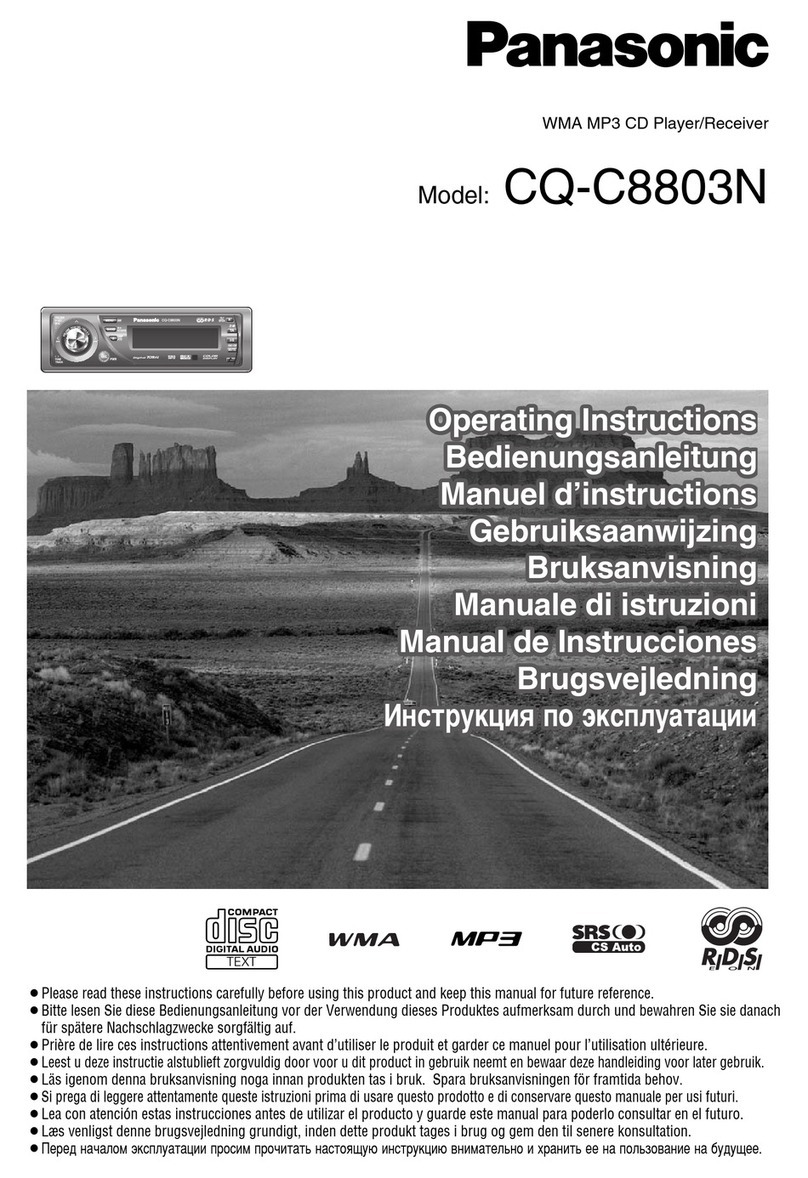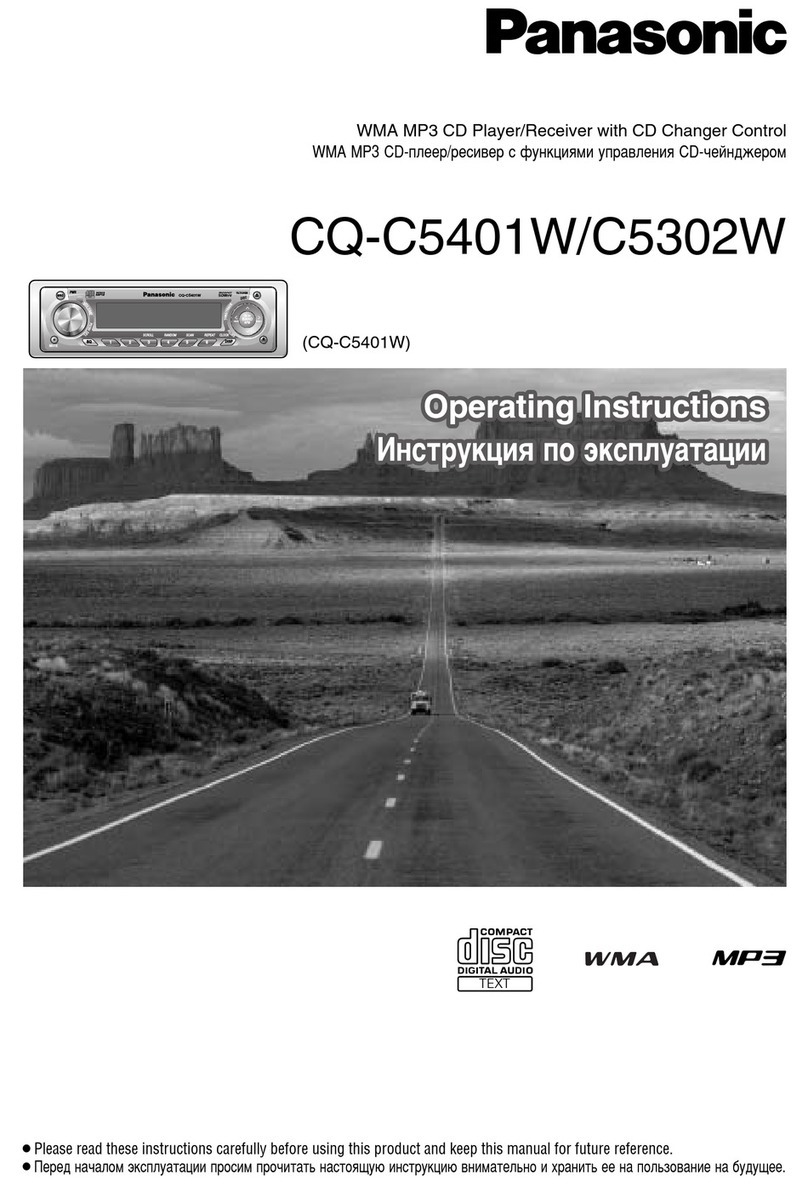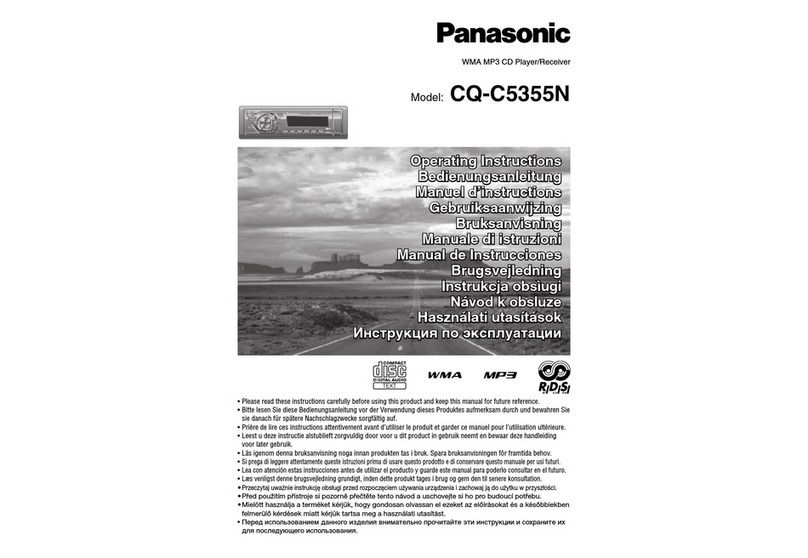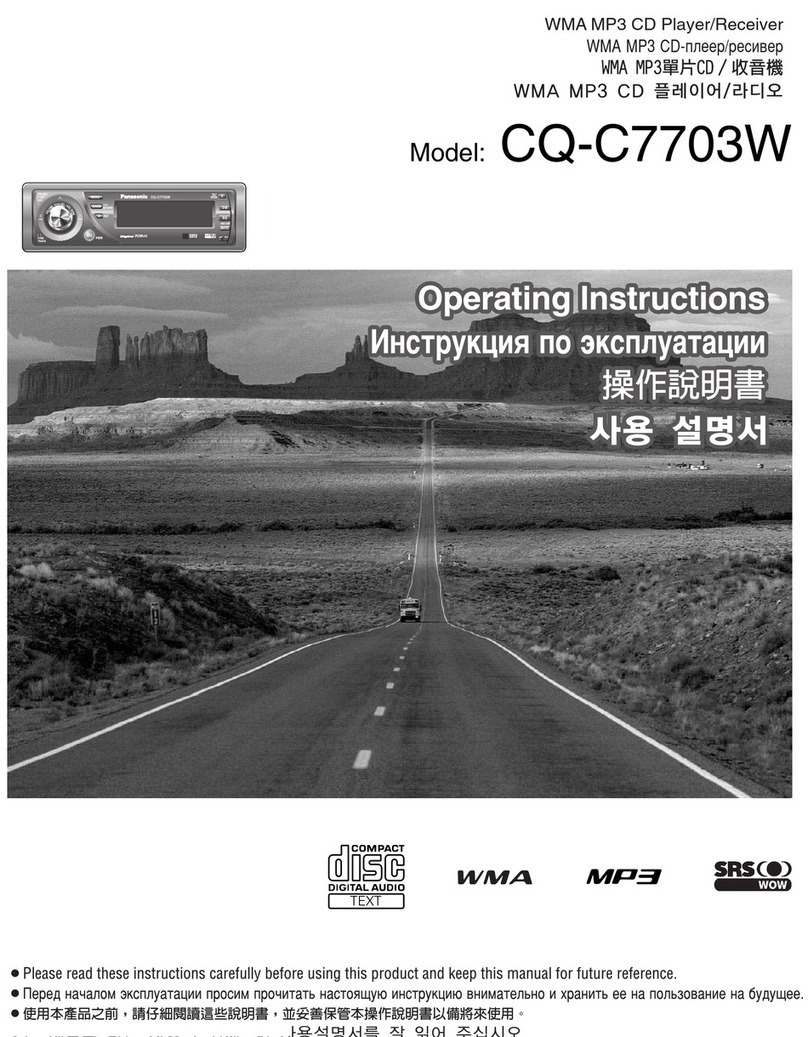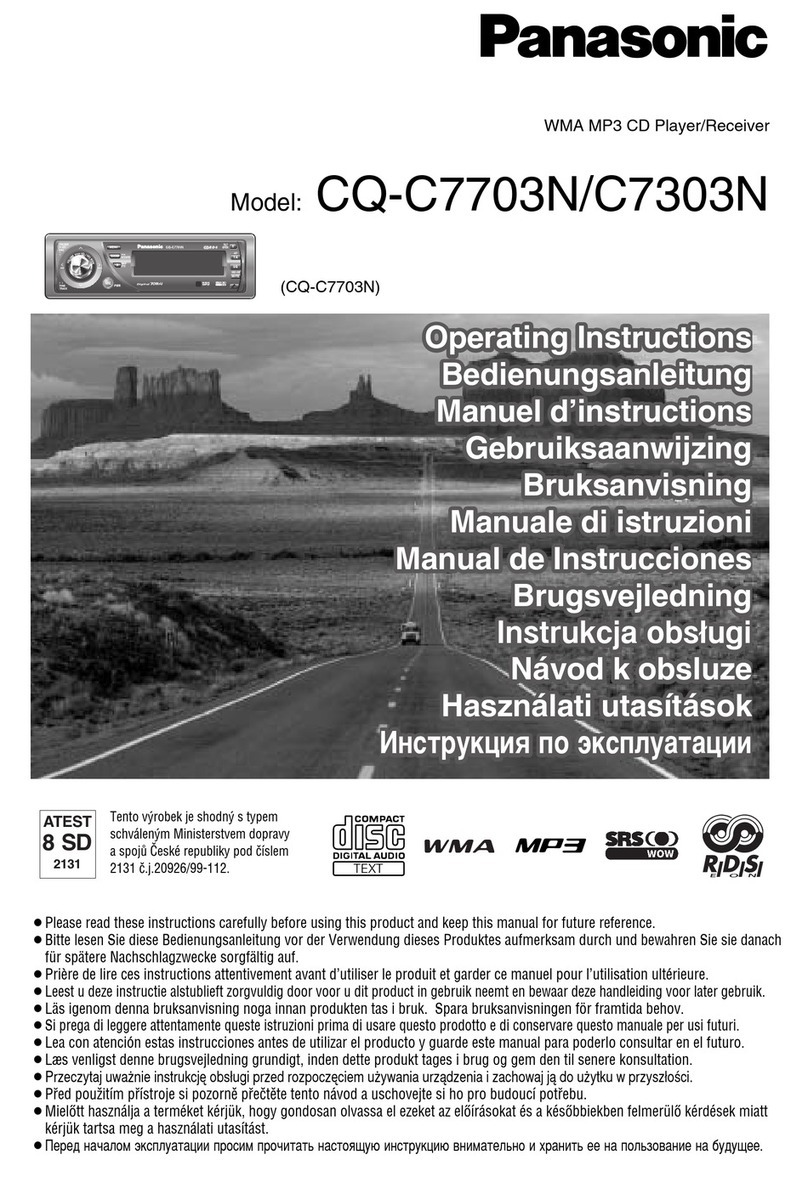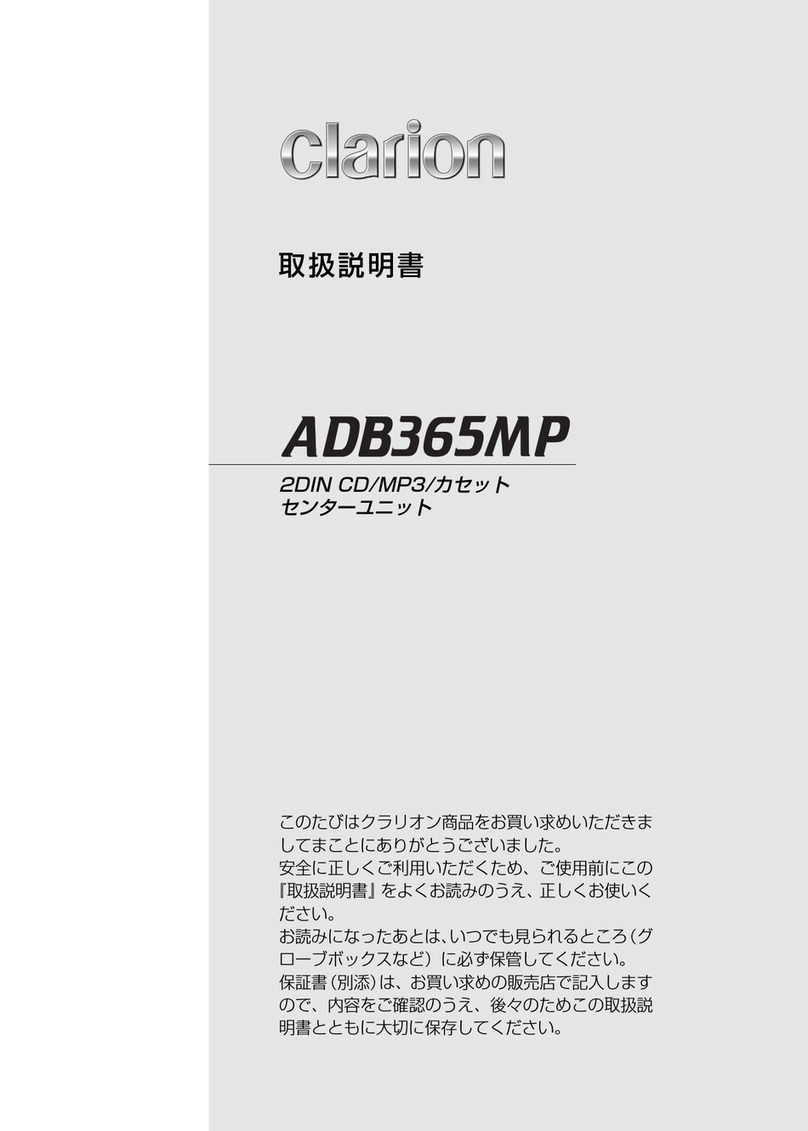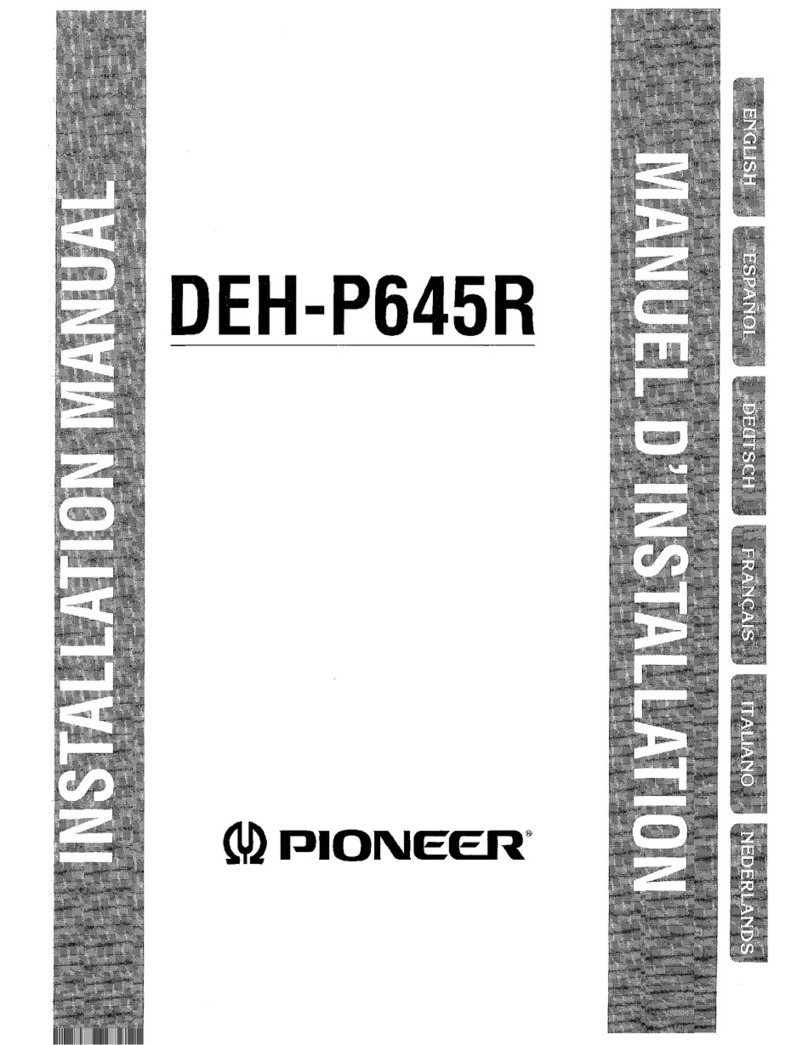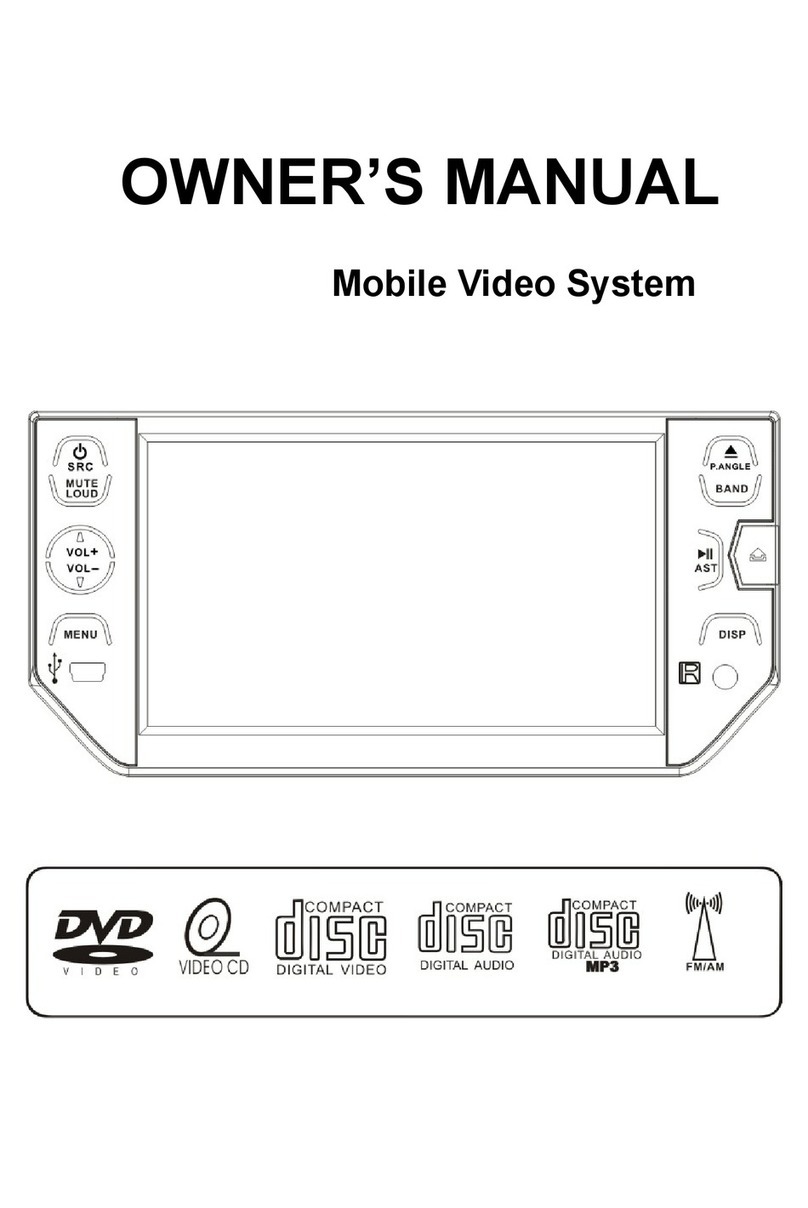
1-6 (No.MA247)
KD-G727
• Design and specifications are subject to change without notice.
• Microsoft and Windows Media are either registered trademarks or trademarks of Microsoft Corporation in the United States and/
or other countries.
• iPod is a trademark of Apple Computer, Inc., registered in the U.S. and other countries.
AUDIO AMPLIFIER SECTION
Maximum Power Output Front 50 W per channel
Rear 50 W per channel
Continuous Power Output (RMS) Front 19 W per channel into 4 Ω, 40 Hz to 20 000 Hz at no more than 0.8% total
harmonic distortion.
Rear 19 W per channel into 4 Ω, 40 Hz to 20 000 Hz at no more than 0.8% total
harmonic distortion.
Load Impedance 4 Ω(4 Ωto 8 Ωallowance)
Tone Control Range Bass ±10 dB at 100 Hz
Treble ±10 dB at 10 kHz
Frequency Response 40 Hz to 20 000 Hz
Signal-to-Noise Ratio 70 dB
Line-Out Level/Impedance 2.5 V/20 kΩload (full scale)
Output Impedance 1 kΩ
Subwoofer-Out Level/Impedance 2.0 V/20 kΩload (full scale)
Other Terminal CD changer
TUNER SECTION
Frequency Range FM1/FM2 87.5 MHz to 108.0 MHz
FM3 65.00 MHz to 74.00 MHz
AM (MW) 522 kHz to 1 620 kHz
(LW) 144 kHz to 279 kHz
FM Tuner Usable Sensitivity 11.3 dBf (1.0 µV/75 Ω)
50 dB Quieting Sensitivity 16.3 dBf (1.8 µV/75 Ω)
Alternate Channel Selectivity (400 kHz) 65 dB
Frequency Response 40 Hz to 15 000 Hz
Stereo Separation 30 dB
MW Tuner Sensitivity 20 µV
Selectivity 35 dB
LW Tuner Sensitivity 50 µV
CD PLAYER/USB MEMORY SECTION
Type Compact disc player
Signal Detection System Non-contact optical pickup (semiconductor laser)
Number of Channels 2 channels (stereo)
Frequency Response 5 Hz to 20 000 Hz
Dynamic Range 96 dB
Signal-to-Noise Ratio 98 dB
Wow and Flutter Less than measurable limit
MP3 Decoding Format MPEG1/2 Audio Layer 3
Max. Bit Rate : 320 kbps
WMA (Windows Media® Audio) Decoding Format Max. Bit Rate : 192 kbps
Playable USB memory Format FAT 12/16/32
Storage Less than 4 GB (1 partition type)
Playable Audio Format MP3/WMA
Max. Current Less than 500 mA
GENERAL
Power Requirement Operating Voltage DC 14.4 V (11 V to 16 V allowance)
Grounding System Negative ground
Allowable Operating Temperature 0°C to +40°C
Dimensions (W ×H ×D) Installation Size (approx.) 182 mm ×52 mm ×152 mm
Panel Size (approx.) 188 mm ×58 mm ×11 mm
Mass (approx.) 1.4 kg (excluding accessories)


